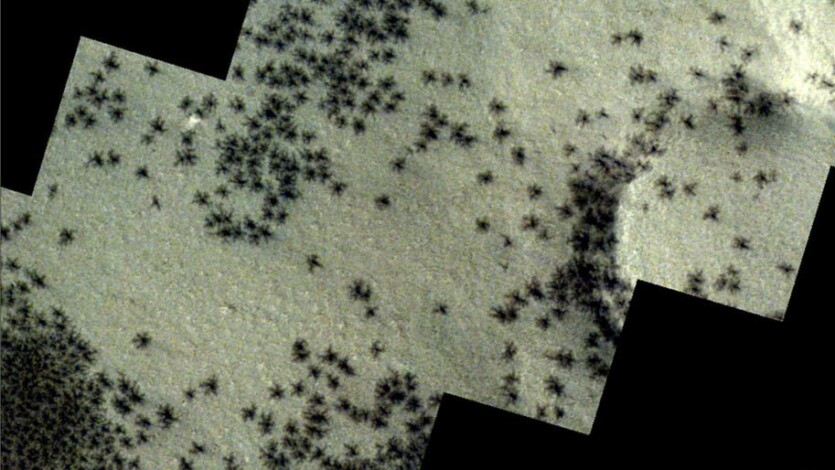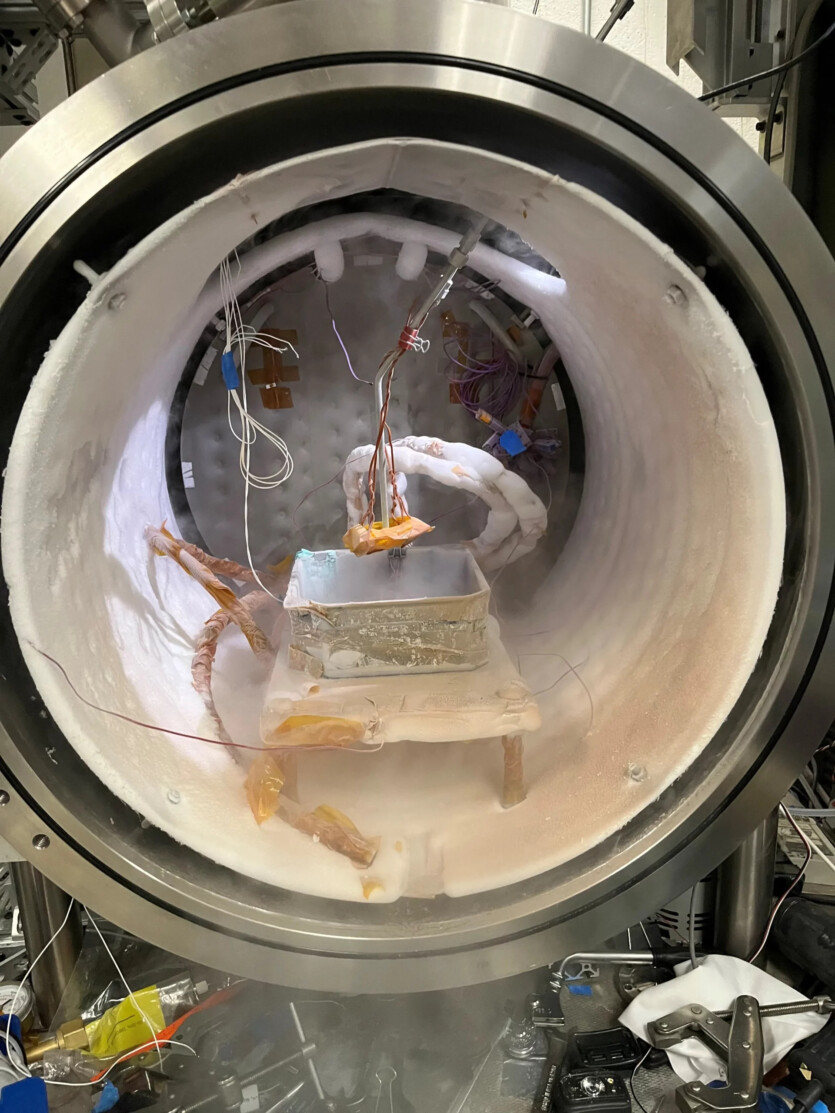
Researchers from NASA have finally revealed the secret of formation mysterious spider-like geological structures on Mars.
These unique geological formations are found mainly in the southern hemisphere of Mars and have no analogues on Earth. They represent an extensive system of channels on the surface of the Red Planet, which in some cases stretch for more than 1 km.
For the first time, NASA specialists were able to reproduce these structures in the laboratory. From the very beginning, scientists suspected that formation of these structures associated with carbon ice.
As temperatures drop during the winter on the Red Planet, a significant portion of the CO₂ in the atmosphere freezes, covering the planet frost. With the onset of spring, this ice changes from a solid to a gaseous state, contributing to the formation of a large number of unusual geological formations.Thus, dark spots and spider-like structures appear, which are commonly called «Kieffer’s zoo».
««Spiders» are unusual and beautiful geological formations in themselves. These experiments will help us refine the models of their formation», — explains Lauren McCune from NASA’s Jet Propulsion Laboratory in Southern California.

Sunlight penetrates the translucent ice and heats the regolith underneath, leading to sublimation beneath the ice slab. The trapped gas builds up pressure, causing the ice to crack and ejection high-speed jets of gas and dust. These jets form unusual geological structures that look like spiders.
The most difficult part of NASA’s experiments was to recreate Martian conditions. To do this, it was necessary to create extremely low temperatures, around 185°C. In addition, it was necessary to recreate the low pressure of the highly rarefied Martian atmosphere. This was achieved by using of the liquid nitrogen-cooled test chamber at the Jet Propulsion Laboratory — Dirty Under-vacuum Simulation Testbed for Icy Environments (DUSTIE).
The scientists used a substance that mimics Martian regolith by placing it in liquid nitrogen. All this was placed in a chamber DUSTIE and pumped in CO₂, which condensed within 3-5 hours.
It turned out that special conditions are required for the formation of spider-like Martian geological structures. Sunlight penetrates the transparent layers of carbon dioxide ice that accumulate during the Martian winter. The warm regolith underneath absorbs this sunlight, heats up even more, and sublimates the lower layer of ice. The accumulated gas under the ice creates pressure and causes the ice to crack, releasing gas and dust.
Mostly, it is the release of gas that creates the characteristic surface features. However, in the laboratory, the team found that some of these cracks were probably formed due to thermal stress rather than gas erosion.
Each feature depended on subtle changes in gas release and ice thickness. For example, dark spots were formed where carbon dioxide broke through the ice layer and released dust. At the same time, these spots were surrounded by bright halos, apparently caused by the deposition of frost from gas plumes.
There are still many questions about the formation of these unusual geological formations. For example, why are they not increasing in size and why are they not found everywhere? These answers may help astrophysicists learn about the geological past of the Red Planet.
The results of the study are published in Planetary Science Journal
Source: ZMEScience

Spelling error report
The following text will be sent to our editors: